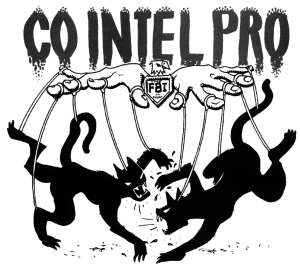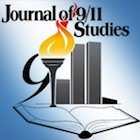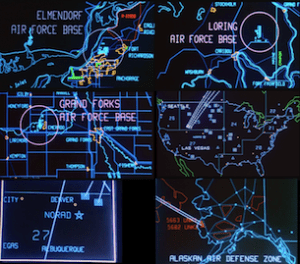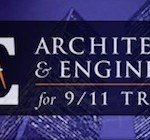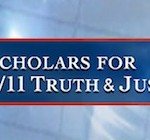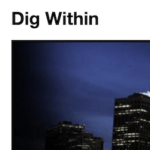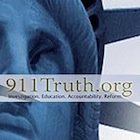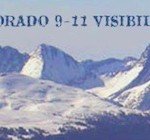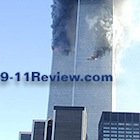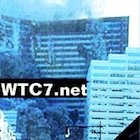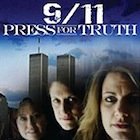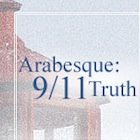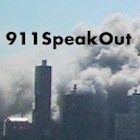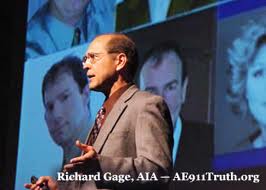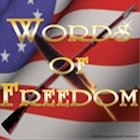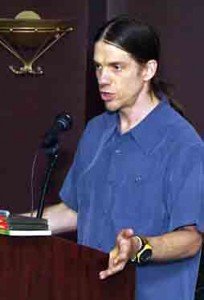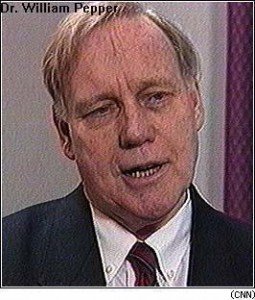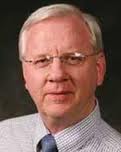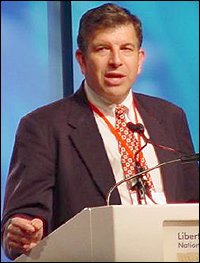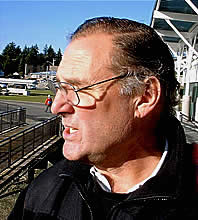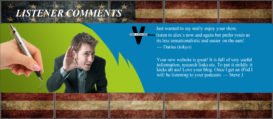March 16, 2014 by Kevin Ryan
When the report of Joint Congressional Inquiry into 9/11 was released in December 2002, it was met with considerable skepticism. That skepticism grew for a period of time but then was reduced to speculation about what was contained in the 28 pages that had been redacted by the Bush White House. Various U.S. government leaders have since suggested that the missing 28 pages point to Saudi Arabia’s complicity in the 9/11 crimes. However such musings fail to discuss other important issues, like the links between the Saudi regime and the Western deep state, or the fact that, from the start, even the Saudis were calling for the 28 pages to be released. Discussion of the missing 28 pages also omits mention of the highly suspicious nature of the Inquiry’s investigation and its leaders.
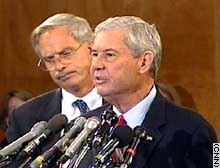 The leaders of the 9/11 Joint Congressional Inquiry were Congressman Porter Goss and Senator Bob Graham, who headed-up the House and Senate intelligence committees at the time. Due to Goss and Graham’s activities before 9/11 and on that day, as well as their representation of the state of Florida, their leadership of the Inquiry presented a remarkable number of questions.
The leaders of the 9/11 Joint Congressional Inquiry were Congressman Porter Goss and Senator Bob Graham, who headed-up the House and Senate intelligence committees at the time. Due to Goss and Graham’s activities before 9/11 and on that day, as well as their representation of the state of Florida, their leadership of the Inquiry presented a remarkable number of questions.
For example, Goss and Graham were meeting with Pakistani ISI General Mahmud Ahmed just as the first plane struck the World Trade Center. The Ahmed meeting is interesting due to the Pakistani ISI’s history with the CIA in arming the “Afghan Arabs” from which al Qaeda evolved. The ISI had also been intimately linked with the terrorist network previously run by the CIA’s partner—the Bank of Credit and Commerce International (BCCI). Added to these coincidences was the fact that Goss and Graham had just returned from a trip to Pakistan in which they had specifically discussed Osama bin Laden, who was a topic of discussion at their 9/11 breakfast meeting as well.
It seems to be an unusual coincidence that the leader of the Pakistani ISI would be present as al Qaeda’s historic attack was taking place. Ahmed’s meeting with Goss and Graham is also notable in light of Goss’ history as a veteran CIA operative, a member of a secret assassination squad, and someone who was trained to recruit and run foreign operatives. It is also remarkable that Goss’ home district was the primary base for several of the alleged 9/11 hijackers.
In fact, much of the evidence that established the official account about the accused men came from Florida. Twelve of them were said to have opened bank accounts in the state, primarily through one institution—SunTrust Bank. Deposits made to these accounts often came from a country that the Inquiry seemed to be protecting—the United Arab Emirates (UAE), which owned the BCCI infrastructure.
In the years since the Inquiry, Graham has claimed that there is compelling evidence that one or more foreign governments facilitated the terrorists in some way. And although he continues to call for release of the redacted 28 pages, Graham now focuses his comments primarily on the Saudi link, which is named in the subtitle of his book on the subject. Others like Richard Clarke, the former counterterrorism lead who is personally close to the UAE royal family, have joined Graham in making these accusations. Yet these men ignore the Saudi connections to other aspects of 9/11 and U.S. leaders, as well as the links to the UAE, Kuwait, and Pakistan’s ISI.
In response to questions about the Inquiry report, Goss was less committed. He said “I can tell you right now that I don’t know exactly how the plot was hatched. I don’t know the where, the when and the why and the who in every instance. That’s after two years of trying. And we will someday have the documents to exploit, we will have the people to interrogate, we will have ways to get more information to put the rest of the pieces of this puzzle on the table. But right now, we don’t have it.”
Therefore it seems that we all agree it would be good to release the missing 28 pages. But it would also be very good for the public to consider the history of the Joint Inquiry and its leaders.
CIA Operative Goss and His Political Benefactor, Graham
Porter Goss joined the CIA in 1961 when he was a student at Yale. It has been reported that Goss was one of the hundreds of CIA officers employed in Operation Mongoose, the covert U.S. project to displace Cuban leader Fidel Castro. Goss later acknowledged that he had recruited and run foreign agents and he said that he would be uncomfortable traveling to Cuba. Over the next decade, Goss worked for the CIA’s Directorate of Operations as a covert operative in Haiti, the Dominican Republic, Mexico, and Western Europe.
In his book, Barry and the Boys, Daniel Hopsicker published a photograph that he had received from the wife of CIA operative and drug-trafficker Barry Seal. Hopsicker claimed that the picture was taken at a nightclub in Mexico City in 1963 and that it included members of a team called Operation 40. One of the men was Porter Goss.
Operation 40 was a CIA-sponsored team accused of conducting assassinations. According to a senior member of the Cuban security apparatus, it was funded by an “important group of businessmen headed by George Bush (Snr.) and Jack Crichton, both Texas oilmen.” Frank Sturgis, one of the “plumbers” who broke into the Democratic National Committee headquarters at the Watergate hotel in 1972, later admitted to having been part of Operation 40. Other infamous CIA operatives who belonged to the group were Thomas Clines and Ted Shackley.
After leaving the CIA (assuming that is possible) Goss began his political career thanks to a favor granted by the man who would later help him lead the 9/11 Joint Inquiry. Goss was appointed by then-Florida Governor Bob Graham, to fill a Democrat vacancy as commissioner of Lee County. Why Graham appointed Goss, a Republican, for the normally partisan post is unclear. But remember that Goss was not just a Republican he was a CIA assassin who admitted to having recruited and run foreign agents.
Goss went on to represent regions of Florida where the alleged 9/11hijackers trained. He was elected to the U.S. Congress in 1988, as a Republican representative from the 13th district. The 13th district included Venice, the home of Huffman Aviation where several of the alleged hijackers trained. After the district was re-zoned, Goss became the representative from district 14, where he was re-elected four times. In the few years prior to 9/11, the alleged terrorists used Goss’ district, in Charlotte County, as one of their main bases of operations.
The area that Goss represented was also known for a long history of CIA-linked drug running. Three weeks after Mohamed Atta showed up at Huffman Aviation, the flight school’s owner, Wally Hilliard, had his Learjet seized when it was carrying 43 lbs of heroin. Rudi Dekkers, the man Wally Hilliard hired to run Huffman Aviation, was arrested for drug trafficking in 2012.
These links between the alleged hijackers and a drug trafficking flight school are not surprising given the history of the area. Covert drug operations in that area went back at least 60 years. The tiny Venice Airport, where the alleged hijackers trained, originated as the Venice Army Airfield and was the home of the operatives who worked for General Claire Chennault. Civil Air Transport, the successor to Chennault’s Flying Tigers and the world’s largest heroin-trafficking operation at the time, transported the drugs that funded the early covert operations of the CIA and those airmen worked closely with organized crime while doing so.
In American War Machine, Peter Dale Scott described how many covert U.S. operations since World War II have been intimately connected with, even dependent on, illicit drug trafficking. From Mexico to Laos and Vietnam, and more recently in Afghanistan, a “shadow CIA” has worked with organized crime figures and banking networks like BCCI to use drug money to undermine democracy.
In 1996, Goss became chairman of the House Permanent Select Committee on Intelligence. In this role, Goss oversaw the inquiry into the drug and gun trafficking that supported the Nicaraguan Contras. That scandal had been exposed a decade earlier but Goss led the cover-up of the CIA’s involvement and the evidence that Vice President Bush had been involved.
In 1999, FBI informant Randy Glass gained some interesting information from Pakistani ISI agent Rajaa Gulum Abbas. As Glass, Abbas, and two others were having dinner in a New York City restaurant surrounded by undercover FBI agents, Abbas pointed to the WTC and said, “Those towers are coming down.” Abbas later made two other references to an attack on the WTC. Glass sent this information to Senator Graham in August 2001. It is not clear whether Graham did anything with it but he certainly isn’t saying anything about it today.
Shortly after 9/11, people were beginning to question what the Bush Administration might have known about a potential al Qaeda hijacking plot. Goss shouted down the accusations. “The only thing that this uproar does is give aid and comfort to the enemy and I don’t think there’s anybody who wants to give aid and comfort to the terrorists,” he said.
The Joint Congressional Inquiry
In the months following 9/11, both Goss and Graham rejected calls for an investigation. The Senate voted for one anyway, however, and that led both Bush and Cheney to attempt to stop it or limit its scope. Apparently the best they could do was to make sure that Goss and Graham were put in charge. That seemed to work as the Inquiry began in February 2002, more than five months after the attacks, and the approach taken was one of uncritical deference to the Bush Administration and the intelligence community.
Goss immediately made it clear that the Inquiry would not be looking for guilt or accountability with regard to 9/11. Saying he was “looking for solutions, not scapegoats,” Goss continued to defend the White House with regard to warnings the president had received about an impending attack, saying it was “a lot of nonsense.”
The FBI did not cooperate but that didn’t seem to bother Goss and Graham. One glaring example of this was that the Bureau would not allow Inquiry staff to interview Abdussattar Shaikh, the FBI informant that two of the alleged hijackers had lived with in San Diego. The FBI also refused to serve a deposition notice and subpoena on Shaikh, despite knowing where he was. Not only that, although the Joint Inquiry agreed to serve written interrogatories on the him, and the FBI had agreed to that plan, Shaikh’s lawyer later said that his client would not respond to the interrogatories. The attorney also warned that, if subpoenaed, Shaikh would be unwilling to testify unless he was granted immunity.
According to the final report from the Joint Inquiry, when interviewed by the FBI Shaikh gave inaccurate information and had an “inconclusive” polygraph examination about his foreknowledge of the 9/11 attacks. Apparently, some FBI agents believed that Shaikh had knowledge not only of the two alleged hijackers with whom he lived, but also of alleged pilot Hani Hanjour.
The Joint Inquiry’s passive response to Shaikh’s lack of cooperation was astonishing. It cannot be reconciled with the approach taken with other persons of interest. This informant clearly had more information and stronger links to the alleged hijackers than almost anyone. Yet the FBI was intent on protecting him and the Joint Inquiry allowed that protection.
The public must wonder why authorities did not simply arrest and torture this man as they did so many others. How can the preferential treatment of Shaikh, someone who obviously knew something about al Qaeda operatives, be reconciled with the treatment of other “persons of interest”? Shaikh was handled as if he was too important to be troubled, whereas people like Abu Zubaydah, who turned out to not have any connection to al Qaeda, were tortured repeatedly.
The Saudi who brought the two alleged hijackers to San Diego to live with Shaikh was Omar Al-Bayoumi. The subject of an FBI investigation three years before 9/11, Al-Bayoumi appeared to be a Saudi intelligence agent. After 9/11, he was allowed to leave the country without being questioned as part of the investigation.
In November 2002, an FBI official sent a letter to Graham and Goss saying, “the Administration would not sanction a staff interview with [Abdussattar Shaikh], nor did the Administration agree to allow the FBI to serve a subpoena or a notice of deposition on [him].” The letter caused Graham to comment, “We were seeing in writing what we had suspected for some time: the White House was directing the cover-up.”
However, that was not the only important issue on which the Joint Inquiry rolled over. For example, the Inquiry could not convince CIA director (DCI) George Tenet to be interviewed, and it accepted the restriction that operational cables and certain other documents could not be viewed other than at CIA headquarters. Further restrictions included that no copies could be made. Clearly, protecting the CIA’s secrets was more important than the safety of potential victims of terrorism.
As with the CIA, the FBI would not allow the Joint Inquiry to take notes on or make copies of documents deemed sensitive by the Bureau. This restricted the Inquiry’s ability to complete its charter, which was very limited to begin with. Yet the Inquiry did not complain. It has since been revealed that the FBI had an asset in direct contact with Osama bin Laden for the eight years leading up to 9/11. Too bad that didn’t get revealed in 2002 but it’s interesting that Graham is not calling attention to it now.
It was claimed by insiders that Goss and Graham exercised “near total control over the panel, forbidding the inquiry’s staff to speak to other lawmakers.” Other members of the Inquiry complained that the two co-chairmen withheld information and controlled the process. One way in which Graham and Goss controlled the investigation was to ask the FBI to look into panel members who might have leaked information. This resulted in the FBI investigating the Inquiry as the Inquiry was investigating the FBI.
Years later, Graham claimed that the White House had disrupted the Inquiry’s work. He said, “Looking back at it, I think we were clearly set up by Dick Cheney and the White House. They wanted to shut us down. And they wanted to shut down a legitimate Congressional inquiry that might raise questions in part about whether their own people had aggressively pursued al-Qaeda in the days prior to the September 11 attacks. The vice president attempted to manipulate the situation, and he attempted to manipulate us. But if his goal was to get us to back off, he was unsuccessful.” According to Graham, Goss was of the same opinion.
Goss agreed that he and Graham were of like mind, even to the point of saying they were “like Frick and Frack” at the time of the inquiry. But the idea that Goss felt obstructed by the White House does not make sense in view of Goss’ own actions.
For one thing, as a congressman Goss had been, and would continue to be, essentially a Bush Administration cheerleader. Additionally, there was no evidence that Goss was in any way interested in achieving truth or justice with regard to the crimes of 9/11. An example was that the CIA’s Inspector General report on 9/11 originally called for accountability with respect to certain individuals including DCI Tenet. In 2004, DCI Goss changed that wording to call for “accountability boards” to be formed at a later date. Then in 2005, when the revised report came out, Goss removed the accountability boards altogether.
The Inquiry protected not only the CIA and FBI, however. The Inquiry’s report also concealed the possible involvement of the United Arab Emirates. The report noted the FBI claim that “the operational planning for the September 11th attacks took place in overseas locations, most notably Germany, Malaysia and the United Arab Emirates.” This is remarkable in that the report went on to make detailed comments in subsequent sections on Malaysia and Germany, but, tellingly, ignored the UAE entirely.
A similar example was the Joint Inquiry’s treatment of the ease with which the alleged hijackers received their travel visas. After noting that special treatment was given to visa applicants from two countries, the report asked why, considering that the “pervasiveness in Saudi Arabia of Wahhabism, a radical, anti-American variant of Islam, was well known before 9/11.” Saudi Arabia was singled out, but the same tough questions were not asked of the second country, the UAE. Neither Richard Armitage (who had helped arm and train the Mujahideen) nor his subordinate, former Sears World Trade executive Grant Green, were examined at all—despite having overseen the Bureau of Consular Affairs which issued the visas.
What Are They Leaving Out?
Bob Graham’s book, ?Intelligence Matters: ?The CIA, the FBI, Saudi Arabia, and the Failure of America’s War on Terror, refers to Saudi Arabia over 100 times. But it mentions the UAE only in reference to one of the hijackers who came from that country.
Is the preferential treatment of the UAE a result of the close relationship that Richard Clarke had with its leaders? More specifically, was Clarke’s relationship merely a result of the fact that the UAE owned BCCI and therefore was able to finance and conduct CIA-like covert operations as part of a private or officially sanctioned network? In other words, was 9/11 a CIA-like operation conducted with the help of countries that the Joint Inquiry failed to criticize—Pakistan and the UAE?
These shortcomings should lead investigators to review where the evidence against the accused terrorists originated. Most of that evidence was delivered by the FBI and the CIA but it often originated in the UAE and in Florida. The UAE was the source of much of the alleged funding of the alleged hijackers. And evidence concerning the travel of the accused was traced back to the UAE, with all but three of the 19 alleged hijackers having traveled through the UAE on their way to the United States.
The facts call into question the apparent goodwill of Bob Graham who was, along with Goss, a “Frick and Frack” lapdog for the cover-up led by the Bush White House and the U.S. intelligence agencies. What were they hiding—the glaring links to Saudi Arabia? That seems like a very convenient limited hangout considering that long-term control of Saudi Arabian oil is an absolute necessity for maintaining the U.S. economy.
A year after release of the Joint Inquiry’s report, an amendment was introduced to the Foreign Operations Appropriations Act for 2004. That amendment called for release of the redacted 28 pages and it implied that Saudi Arabia was the only missing piece of the 9/11 puzzle. The amendment was killed by a claim that it was not germane to the foreign appropriations bill. But the idea that Saudi Arabia was the only foreign power involved in the 9/11 operation was firmly implanted in the American psyche.
What’s different today? Saudi Arabia certainly does have strong connections to 9/11, and in many more ways than Graham will admit. But discussion of the financing and management of the alleged hijackers is only the tip of the iceberg and, even within that limited context, the work of the Joint Inquiry has diverted attention away from many of the facts. Let’s hope that, twelve years later, Americans have become a little more educated about 9/11 and the cover-up investigations into those crimes.
